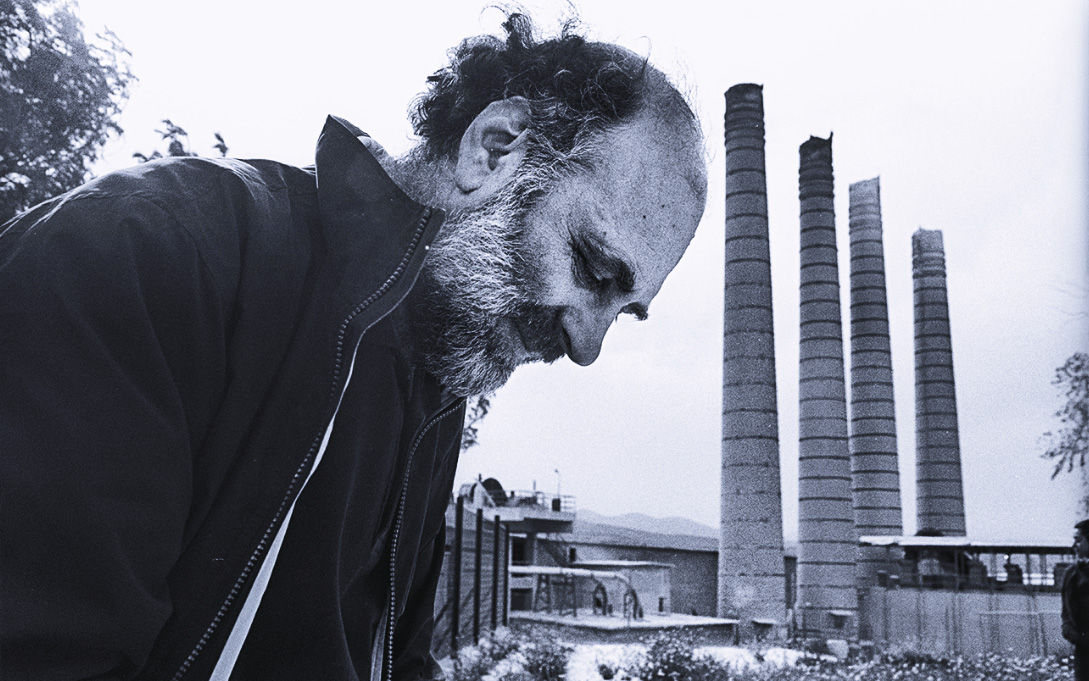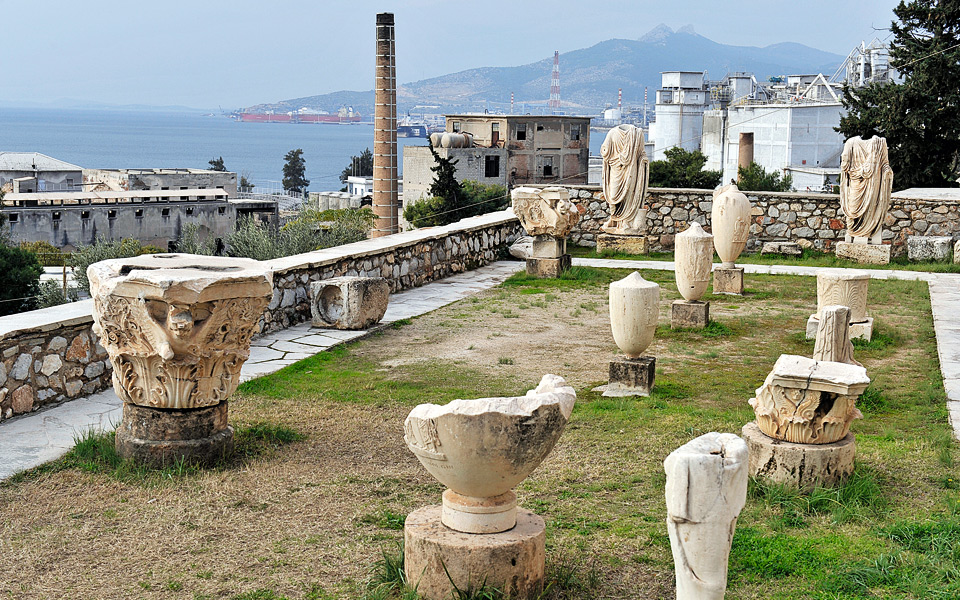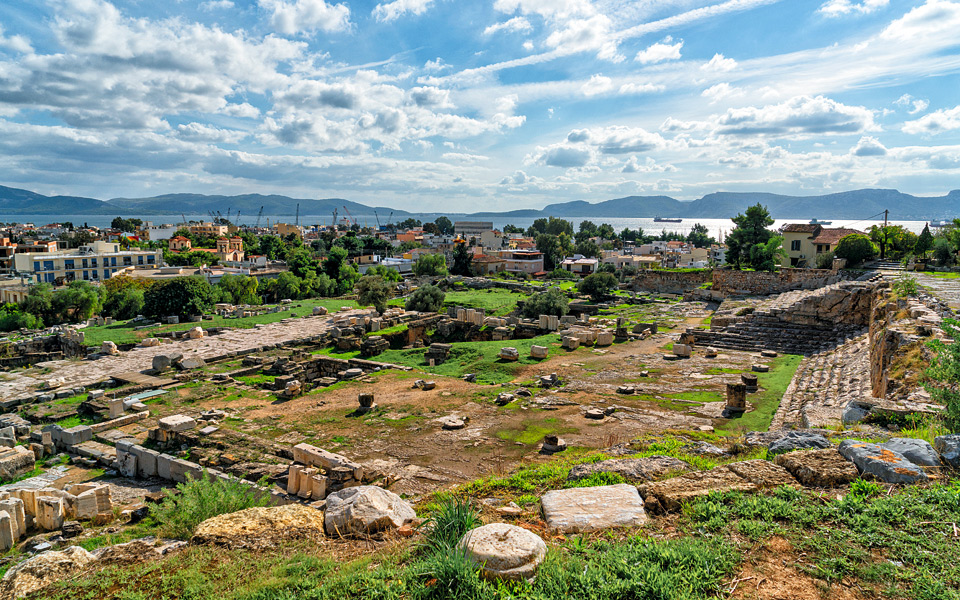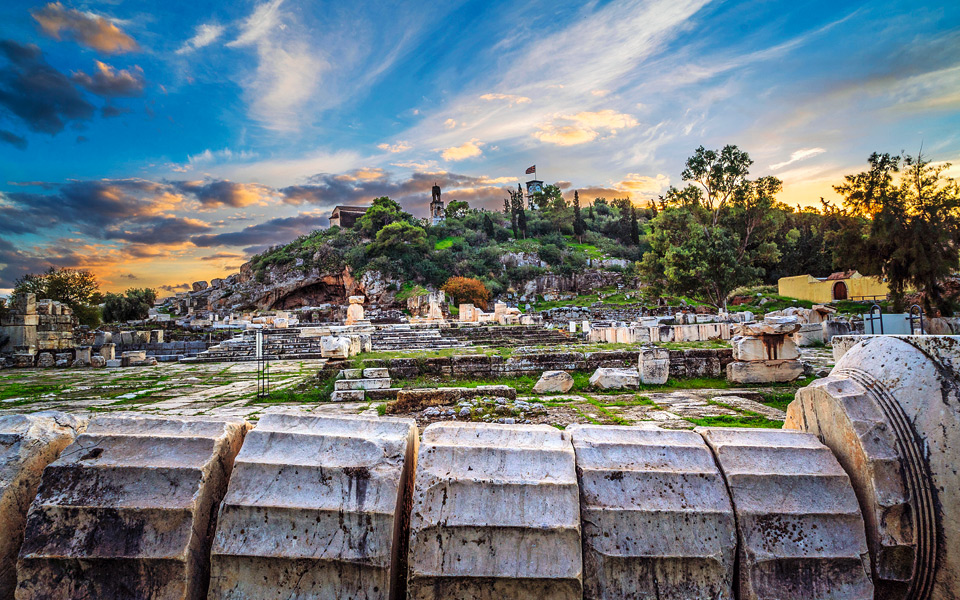The Panathenaic Way: Athens’ Historic Pathway Comes Alive...
A major restoration project is bringing...

Filippos Koutsaftis’ 2000 documentary ‘Mourning Rock’ served as one of the main endorsements in Elefsina’s bid for the title of European Capital of Culture for 2023.
© Katerina Kambiti
What can visitors expect when they head to Elefsina on Saturday and Sunday (February 4 and 5) to attend the festivities for the West Attica town’s inauguration as a European Capital of Culture? Filmmaker Filippos Koutsaftis plans to be among them and is looking forward to the rich two-day program of exhibitions, concerts, DJ parties and parallel events. The director of “Mourning Rock” will be playing another role than that just of visitor, however, because it was his excellent documentary that served as one of the main endorsements in the town’s bid for the title.
After being screened publicly for the first time in 2001, “Mourning Rock” broke all local records for a documentary; it hasn’t stopped traveling abroad, provoking conversation, reaping awards and being regarded as a reference for the town and a standard-bearer in Greek cinema.
Koutsaftis shot his first images of Elefsina in 1988 and spent the next 12 years recording its evolution through repeat visits, designed to juxtapose its identity as home of the Eleusinian Mysteries of ancient times with its modern character as an industrial town fallen by the wayside. “From day one, it was like opening a gateway to a world of wonders. There was just such a wealth of material,” he reminisced.

Ancient beauty with an industrial backdrop.
© Perikles Merakos
The 73-year-old filmmaker’s manner is halting, so much so that you can’t tell if it’s from being overwhelmed by past memories or excited about his new project, “The Elefsinians.” Here, residents – some of whom appeared in “Mourning Rock” – talk about their hometown today, with the past featuring in the narrative through selected texts. As in the earlier project, myth and history are intertwined. The documentary, which is still being filmed, is being slated for release in November.
“It comprises portraits of Elefsinians, whom we selected with my close associated Thanasis Milisis. Marcel Schwob used to say that the art of the biography lies in prizing the life of a poor actor as much as that of Shakespeare. These are not the portraits of heroes. These are everyday people, cases in the majesty of the mundane. People emerging from different paths,” noted Koutsaftis.
“There are three students, for example, who are absolutely brilliant. These young women must have been born around the time when ‘Mourning Rock’ came out. They discovered the documentary shortly before the pandemic began and got in touch with me, because they wanted to talk about how they view their lives and how they manage them.”
Our discussion took place at his office in the Athens neighborhood of Gyzi, the day before he left for Paris, where his most recent documentary, “Zakros,” premiered at the Louvre on January 25. This project is on the ongoing excavations of a Minoan settlement on the eastern coast of Crete, which he first visited in 1987, while he’s already thinking about his next location, which will be the island of Aegina. It’s hard to keep track of Koutsaftis, whose opus is the product of painstaking dedication, of mental and physical commitment lasting decades. It’s like a Russian nesting doll of towns and sites, where one contains the other.
But let’s go back to the beginning, to Elefsina, where it all started and which is the center of attention this year. What does Elefsina mean to Koutsaftis and how would he describe it?
“Elefsina is a very big deal for Greece, which transcends the ecology, the economy or politics. It weighs on the consciences of present-day Greeks like the song of sin; the thing we turned our back on. Let’s not kid ourselves. Giorgos Seferis said it very well: ‘On the earth’s back we hungered, but when we’d eaten well we fell to these lower regions mindless and satisfied.’ When the country’s reconstruction began in the 1950s, we turned our back on Elefsina in our haste to become Europe. People back then said: ‘Who cares about antiquities now? We want to built, create jobs, move forward.’ Those were different times, with different priorities,” says Koutsaftis.
One of the first images we see in “Mourning Rock” is an excavation in Ano Elefsina in 1988. We are guided around the site by Panagiotis Farmakis (he died before the film was finished), a drifter and archaeology buff who wandered around, sifting through dirt and debris, and turning over any potentially interesting finds to the archaeologists. Koutsaftis felt an instant kinship with him.
In all of his documentaries, the process of excavation runs in parallel with the process of investigating the present. Koutsaftis is at once a filmmaker and archaeologist, of people and places.

Panoramic view from the top of the hill, taking in everything from the ancient Telesterion to the sea.
© Perikles Merakos
The big question is always: How do you pick a path? “The way I choose is by committing to the path that will give me knowledge. The science of archaeology was discovered at the same time as cinema. They are related from a methodological standpoint. As is documentary filmmaking. Both begin with fragments. They put together fragmented worlds, piece by piece. These are fragments of history, archaeology, memory and day-to-day life that you try to piece together into a mosaic. The same is the case with ‘The Elefsinians.’ It is about creating an identity for someone who is anonymous, through the pathways of time and history,” he said.
And what has he learned from all these ‘anonymous’ people? “So much. I am very grateful. I even found an intact section of Greeks from Asia Minor when I was shooting ‘Mourning Rock.’ No one talked about the refugees back them. I did many interviews with people who experienced the Asia Minor Catastrophe. Most of their lives were like something from a novel,” said Koutsaftis.
The filmmaker sees Greece of 2023 in the narratives of his new subjects in “The Elefsinians,” and “it’s very different from 2000.”
“The town has been and is still going through an economic crisis that was exacerbated by the pandemic. People are shutting themselves off gradually, closing in, to deal with challenging conditions. Many young people are doing jobs that have no real prospects just to help their families,” said Koutsaftis, adding that the title of European Capital of Culture “is a major opportunity for Elefsina.”

The Temple of Demeter, where the Eleusinian Mysteries were staged.
© Perikles Merakos
“The general director Michail Marmarinos and the entire team are doing an amazing job. It can change the town entirely. I personally witnessed how being a Cultural Capital helped transform Marseilles,” he added, referring to the French port city that held the title in 2013.
After all these years of studying Elefsina and its people, does Koutsaftis regard himself as an “Elefsianian” too?
“I never took myself out of it. I feel very grateful to the town and have taken a lot more from it than I have given. I am a part of it, but I didn’t stay and become assimilated. I left to return, to see it with fresh eyes, because our eyes grow accustomed to the good and the bad, and start seeing them all the same. This is something I learned in the air force. I studied mechanical engineering and worked on aircraft when I was in service. I was responsible for three aircraft, but every once in a while, I’d switch with someone else, because someone else spots the problem immediately. This is something that is well-documented; I’m not saying anything new. But everything I do is a springboard for thinking ahead, taking a small step forward. Every effort is about moving a millimeter forward.”
This article was previously published at ekathimerini.com.
A major restoration project is bringing...
Between Strefi and Lycabettus Hills, Neapoli...
Discover how ancient Greek architecture inspired...
A guided journey across Athens’ storied...